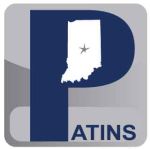Digital Rights Manager (DRM) Information
DRM Roles
As per the Individuals with Disabilities Education Improvement Act of 2004 (IDEA 2004), the provision of AEM (Accessible Educational Materials) to students with documented print disabilities in accessible formats in a timely manner is a federal mandate. To not identify students and provide the needed accessible formats of print instructional materials puts school corporations in a potential position of liability.The Indiana Department Of Education (IDOE) directs Superintendents (or her/his designee) of each public school corporation and charter school to appoint up to five (5) Digital Rights Managers (DRMs) to support the National Instructional Materials Accessibility Standard (NIMAS) Regulations of the IDEA 2004, for the schools they serve. Please consider having five (5) DRM’s for your school corporation no matter what the size of the corporation, or the number of students currently identified with some type of print disability. Personnel changes and many other factors may leave a school corporation without a properly trained DRM.
Remember that scientific, documented, replicated research tells us that 1 in 5 individuals have dyslexia. There is a good chance that there are children in your corporation with this specific learning disability who are not being adequately identified and served. For further resources on dyslexia, please visit DRM Resources.
It is better to have trained, active DRMs in your school corporation who may never be called on to fulfill their role than it is for your school to be in another scenario: that of having no trained and active DRMs to meet the needs of students. Please be aware that lawsuits have come about due to a school’s non-compliance with the NIMAS regulations.
DRM Responsibilities
- Protect the copyrighted materials including the contents of the NIMAS file sets.
- Assure compliance with items in the ICAM Limited Users Agreement, which they will agree to each time they log into the ICAM Ordering System.
- Manage the confidential student information that may be shared between the DRM and the teacher of record (TOR).
- Confirm documentation is provided by certified competent authority on the determination of print disabilities.
- Register students and/or teachers in the ICAM ordering interface.
- Place materials request.
- Track and manage delivery of services.
- Communicate with educators concerning the provision of AEM.
- Other responsibilities that may arise pertaining to those listed.
DRM Registration by Superintendents
Guidelines allow a maximum of 5 Digital Rights Managers (DRMs) per school corporation or charter school.To register a new DRM, a superintendent, or that superintendent’s designee, needs to complete this form in order to add up to five DRMs. It is also important to remove any DRMs who are no longer in service using this same form. Contact the IERC for your school corporation's currently registered DRMs.

